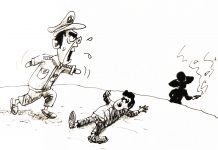Because we all live under the same sun
We all walk under the same moon
Then why, why can’t we live as one.
-Scorpions
The Mercury Years Album
Historically, the arrival of Spanish colonizers in the 16th century introduced Christianity to the Philippines, leading to the marginalization of Muslim communities, known as Moros, in the southern regions. This division was further exacerbated by land policies and governance structures during both Spanish and American colonial periods, which often displaced Muslim populations. The Moros or Muslim are already entrenched in Mindanao even before the Christians in the Spaniards.
Centuries prior the Holy Land of Israel were bustling with wars in the Crusade having prominent heroes Richard the Lion Hearted and Prince Balian (Valiant) and Saladin for Christian Crusaders and Muslim Warriors.
In the Philippines and in modern times, the conflict has been marked by struggles for autonomy and self-determination by Muslim groups, such as the Moro National Liberation Front (MNLF) and the Moro Islamic Liberation Front (MILF). These groups have sought greater control over their ancestral lands and resources, leading to clashes with the predominantly Christian-led government.
Now the Bangsa Autonomous Region of Muslim Mindanao and the Israel Jew are the status quo of the Israel and Mindanao flash points. A reign of peace came and perhaps , a peaceful co-existence is in place, this in spite the packets of wars in the Philippines and the on-going Hamas, Hezbollah war against Israel.
But looking closely, we can v catch a common ground in the two faiths;
At their core, both Islam and Christianity are rooted in the worship of one God—an omniscient, omnipotent Creator who commands justice, love, and mercy. The essence of monotheism—unwavering faith in one divine source—serves as a bridge between these two traditions. The Qur’an and the Bible, sacred texts of Islam and Christianity respectively, illuminate this shared foundation, calling followers to live lives marked by integrity, compassion, and reverence.
Furthermore, both faiths uphold the principles of charity and service to humanity. Islamic teachings emphasize Zakat (almsgiving), a pillar of the faith that fosters social responsibility and equality. Similarly, Christian doctrine champions acts of kindness and altruism, exemplified through the teachings of Jesus Christ about loving one’s neighbor. In the heart of both religions lies a commitment to uplifting the oppressed and mending the fractures of society.
The figure of Abraham serves as a luminous symbol of unity, revered by both Islam and Christianity as the patriarch of faith. Known as Ibrahim in Islam, Abraham embodies the virtues of obedience, courage, and unwavering devotion to God. His narrative, chronicled in both the Qur’an and the Bible, is a poignant reminder that the roots of spiritual tradition are intertwined—a testament to the shared ancestry of believers.
Lastly, as Ramadan ends and a new and refreshed era after the fasting and sacrifice comes for our brother Muslims , we pray that the intertwined realities are cemented in unity. No need to condemn and fight each other, as Scorpion says, we are live under the same Sun, we are looking at the same Moon, then why, why can’t we live as one!




